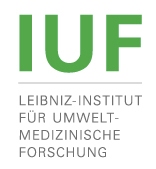Newly developed eczema during aging: What influence do genes and air pollution have?

While risk factors are known for atopic eczema in childhood, there are far less insights into eczema in adulthood. What role do predisposition and environmental factors play? Is this the “atopic eczema of the elderly”?
With regards to these questions scientists from the IUF – Leibniz Research Institute for Environmental Medicine have analyzed data from the long-term study SALIA*. Results which were published in July show that the development of eczema in the elderly is very common.¹
Thus, about 8 % of 834 women have indicated that they developed eczema for the first time at the age of 55+. A correlation between long-term exposition to traffic-related air pollution and the initial development of eczema beyond 55 years was shown. The scientists specifically found a correlation between increased values of fine particles (PM₂,₅, PM₁₀) and gaseous environmental pollutants (NO₂, NOₓ) and eczema in elderly women.
Next, the scientists from IUF together with a colleague from the Monash University in Melbourne, Australia, asked themselves whether this is a form of atopic eczema. It was found that eczema in the elderly differs from atopic eczema in childhood.
Accordingly, the correlation between air pollution and eczema in elderly women was stronger, if they had neither hay fever, nor elevated anti-IgE antibodies in the blood, and if they had no genetic predisposition to develop atopic diseases such as atopic eczema. These investigations were recently published in the Journal of Allergy and Clinical Immunology.²
“Our investigation shows that first time development of eczema at the age of 55+ is more frequent than previously assumed. Additionally, it suggests a correlation with chronic exposure to traffic-related air pollution”, explains Dr. Tamara Schikowski, environmental epidemiologist and group leader at IUF.
Prof. Jean Krutmann, dermatologist and director of IUF adds: “Up to now, we know very little about eczema in the elderly. The finding that eczema in the elderly differs from atopic eczema in children indicates that this is an independent, so far unknown entity”.
* About the SALIA study
The analyses are based on data from the SALIA study which was initiated in 1985 in order to investigate the long-term effects of air pollution on health. Elderly women from the former highly industrialized Ruhr area and the rural, Southern “Münsterland” were considered.
Men were excluded as they were occupationally exposed to high air pollution in coal mining and steel industry at this time. The initial examination took place with 54-55 years (1985-1994). The first follow-up of health data was conducted via questionnaire. 834 women with an average of 73.5 years participated in the second examination (2007-2010).
The hereby presented analyses are based on the results of this examination. The statistical correlations are calculated with so-called regressions models. In this process, diverse confounding factors e.g. smoking are included and the models adapted thereto.
The air pollution strongly decreased in the Ruhr area during the study so that health improvement can already be observed to some extent. The SALIA study is supervised by Dr. Schikowski from the IUF.
Sources
1.) Schnass W, Hüls A, Vierkötter A, Krämer U, Krutmann J, Schikowski T: Traffic-related air pollution and eczema in the elderly: Findings from the SALIA cohort. Int J Hyg Environ Health 221(6): 861-867, 2018. doi: 10.1016/j.ijheh.2018.06.002.
Link: https://doi.org/10.1016/j.ijheh.2018.06.002
2.) Hüls A, Abramson MJ, Sugiri D, Fuks K, Krämer U, Krutmann J, Schikowski T: Nonatopic eczema in elderly women: Effect of air pollution and genes. J Allergy Clin Immunol 2018. doi: 10.1016/j.jaci.2018.09.031.
Link: https://doi.org/10.1016/j.jaci.2018.09.031
About the IUF
The IUF – Leibniz Research Institute for Environmental Medicine investigates the molecular mechanisms through which particles, radiation and environmental chemicals harm human health. The main working areas are environmentally induced aging of the cardiopulmonary system and the skin as well as disturbances of the nervous and immune system. Through development of novel model systems the IUF contributes to the improvement of risk assessment and the identification of novel strategies for the prevention / therapy of environmentally induced health damage.
More information: http://www.iuf-duesseldorf.com.
The IUF is part of the Leibniz Association: http://www.leibniz-gemeinschaft.de/en/home.
Contact
Christiane Klasen, Personal Assistant to the institute’s Director
IUF – Leibniz Research Institute for Environmental Medicine
Auf’m Hennekamp 50
40225 Düsseldorf
Germany
Email: Christiane.Klasen@IUF-Duesseldorf.de
Phone: +49 (0)211 3389 216
Media Contact
More Information:
http://www.iuf-duesseldorf.deAll latest news from the category: Life Sciences and Chemistry
Articles and reports from the Life Sciences and chemistry area deal with applied and basic research into modern biology, chemistry and human medicine.
Valuable information can be found on a range of life sciences fields including bacteriology, biochemistry, bionics, bioinformatics, biophysics, biotechnology, genetics, geobotany, human biology, marine biology, microbiology, molecular biology, cellular biology, zoology, bioinorganic chemistry, microchemistry and environmental chemistry.
Newest articles

High-energy-density aqueous battery based on halogen multi-electron transfer
Traditional non-aqueous lithium-ion batteries have a high energy density, but their safety is compromised due to the flammable organic electrolytes they utilize. Aqueous batteries use water as the solvent for…

First-ever combined heart pump and pig kidney transplant
…gives new hope to patient with terminal illness. Surgeons at NYU Langone Health performed the first-ever combined mechanical heart pump and gene-edited pig kidney transplant surgery in a 54-year-old woman…

Biophysics: Testing how well biomarkers work
LMU researchers have developed a method to determine how reliably target proteins can be labeled using super-resolution fluorescence microscopy. Modern microscopy techniques make it possible to examine the inner workings…





















